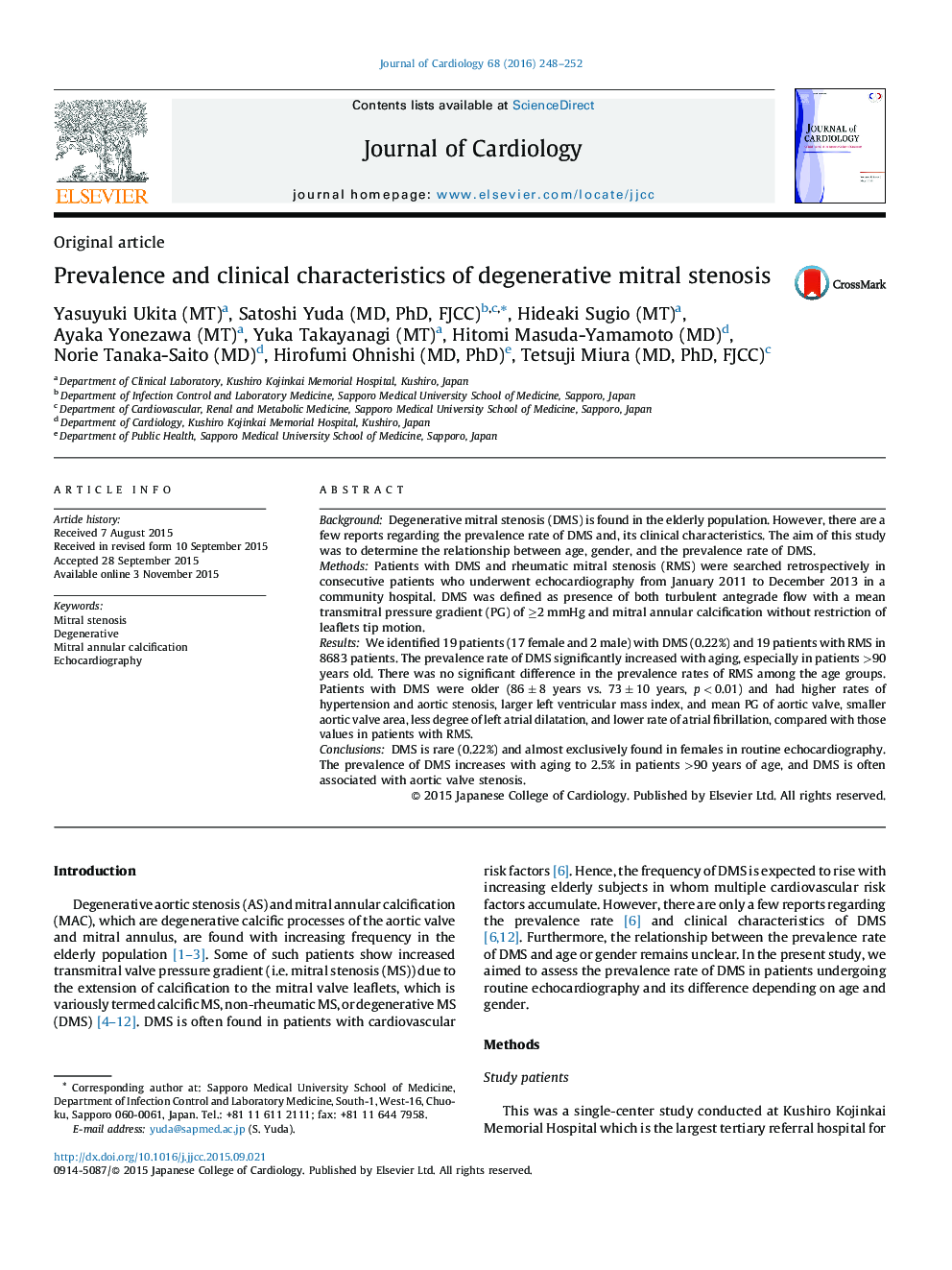| Article ID | Journal | Published Year | Pages | File Type |
|---|---|---|---|---|
| 2962775 | Journal of Cardiology | 2016 | 5 Pages |
BackgroundDegenerative mitral stenosis (DMS) is found in the elderly population. However, there are a few reports regarding the prevalence rate of DMS and, its clinical characteristics. The aim of this study was to determine the relationship between age, gender, and the prevalence rate of DMS.MethodsPatients with DMS and rheumatic mitral stenosis (RMS) were searched retrospectively in consecutive patients who underwent echocardiography from January 2011 to December 2013 in a community hospital. DMS was defined as presence of both turbulent antegrade flow with a mean transmitral pressure gradient (PG) of ≥2 mmHg and mitral annular calcification without restriction of leaflets tip motion.ResultsWe identified 19 patients (17 female and 2 male) with DMS (0.22%) and 19 patients with RMS in 8683 patients. The prevalence rate of DMS significantly increased with aging, especially in patients >90 years old. There was no significant difference in the prevalence rates of RMS among the age groups. Patients with DMS were older (86 ± 8 years vs. 73 ± 10 years, p < 0.01) and had higher rates of hypertension and aortic stenosis, larger left ventricular mass index, and mean PG of aortic valve, smaller aortic valve area, less degree of left atrial dilatation, and lower rate of atrial fibrillation, compared with those values in patients with RMS.ConclusionsDMS is rare (0.22%) and almost exclusively found in females in routine echocardiography. The prevalence of DMS increases with aging to 2.5% in patients >90 years of age, and DMS is often associated with aortic valve stenosis.
